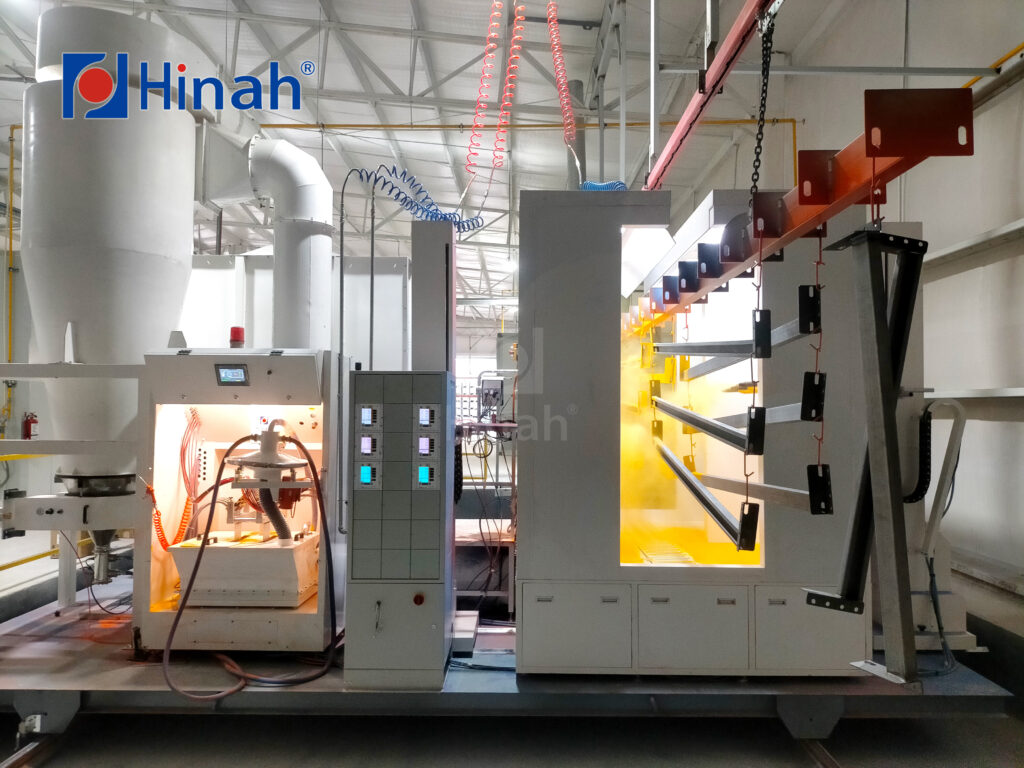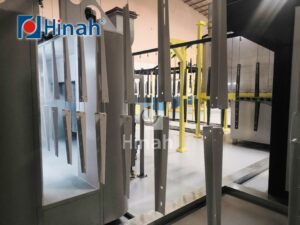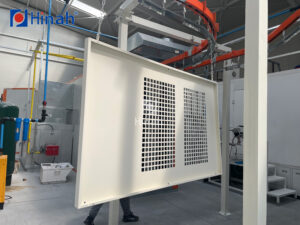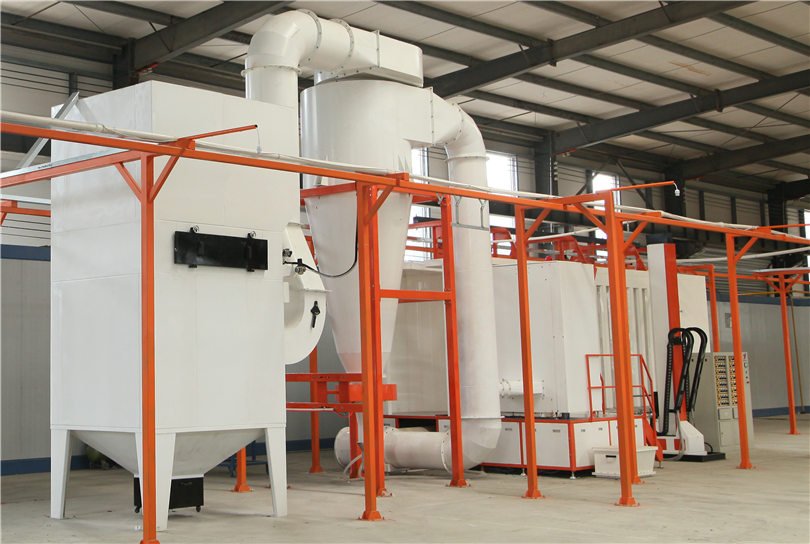In every automated powder coating line, countless parts move in perfect rhythm — the conveyor glides steadily, spray guns release a precise cloud of powder, and the curing oven locks in a flawless finish. Yet behind this seamless operation lies a quiet but essential system that rarely gets the credit it deserves: the powder recovery unit.
Each particle of powder that escapes the booth is more than wasted material—it represents lost profit and unnecessary environmental impact. The powder recovery unit turns that loss into value. It ensures that the excess powder doesn’t go to waste but is carefully collected, filtered, and reintroduced into the coating process. In modern automated powder coating lines, where precision and cost-efficiency define success, this system is not just an accessory—it’s a quiet guardian of quality and sustainability.


Inside the Powder Recovery Unit: Main Components
A powder recovery unit may look like a simple extension of the spray booth, but in reality, it’s a precisely engineered system made up of several key components that work together to maintain efficiency and cleanliness within an automated powder coating line. Each part has its own purpose — and when combined, they create a closed-loop process that minimizes powder waste and maximizes productivity.
- Cyclone Separator
The cyclone is the first stage of powder recovery. It uses centrifugal force to separate heavier powder particles from the air stream. Most of the reusable powder collects here before being transferred to a storage bin or directly back into the feed system.
- Filter Cartridge or Bag Filter
After the cyclone, fine powder particles that remain suspended in the air are captured by high-efficiency filters. These cartridges or fabric bags trap the smallest particles, ensuring clean air is discharged while maintaining a high recovery rate.
- Fan and Ducting System
This is the “lungs” of the recovery unit. The fan generates a steady airflow through the booth and recovery chamber, while the ducting system directs overspray into the cyclone and filters. A balanced airflow is essential for consistent coating results and for keeping the booth environment dust-free.
- Powder Collection Bin or Hopper
All recovered powder eventually ends up here. The bin or hopper stores the captured powder, which can then be sieved and reused in the coating process. A well-designed collection system makes color changeovers faster and reduces contamination risk.
- Control System
Modern powder recovery units are equipped with intelligent control panels that monitor airflow, pressure levels, and filter conditions. In a fully automated powder coating line, this ensures stable performance, quick fault detection, and minimal manual intervention.
Together, these components form a smart, integrated system that keeps an automated powder coating line running clean, efficient, and cost-effective — every hour of every shift.


Powder Recovery Challenges in Automated Powder Coating Line
Even with advanced automation, powder recovery remains one of the most delicate parts of an automated powder coating line. We often face challenges such as excessive powder waste, uneven airflow inside the booth, and rapid filter clogging that slows production. Frequent color changes can lead to cross-contamination if the recovery system isn’t cleaned or designed properly, while poor cyclone or duct configuration can reduce suction efficiency and cause powder to escape into the workspace. Over time, these issues don’t just increase material costs—they also affect coating uniformity, booth cleanliness, and the overall stability of the line. In a system built for precision and consistency, even small inefficiencies in powder recovery can quietly undermine performance, making effective recovery management a key factor in every successful coating operation.
How Powder Recovery Units Enhance Efficiency and Sustainability
A well-designed powder recovery unit transforms the entire performance of an automated powder coating line. By capturing and recycling overspray, it dramatically reduces powder waste and material costs, ensuring that nearly every gram of powder contributes to the final finish. The consistent airflow it maintains inside the booth helps achieve uniform coating thickness and minimizes rework, while cleaner air circulation extends the lifespan of filters and spray equipment. Beyond efficiency, the environmental impact is equally significant—less waste means fewer emissions, lower disposal requirements, and a safer, dust-free workspace. Modern recovery systems go even further, integrating features like automatic color change, self-cleaning filters, and real-time pressure monitoring to maintain stable performance without manual intervention. For manufacturers aiming to balance productivity with sustainability, the powder recovery unit is not just a technical necessity—it’s the heart of a smarter, cleaner, and more responsible automated powder coating line.







